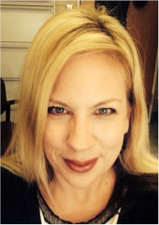October 14, 2016
To: President Barack Obama;
UN Secretary General Ban Ki-Moon;
Prince Zeid, United Nations High Commissioner for Human Rights
The Special Advisors on the Prevention of Genocide and Crimes Against Humanity to the UN Secretary General, respectively.
U.S. Senator John Boozman (R-AR); U.S. Senator McGovern (D-MA); and, U.S. House of Foreign Affairs Committee Ranking Member Eliot Engel (D-NY)
From: Scholars of Genocide Studies from Across the Globe, Human Rights Activists, Anti-genocide Activists, and People of the Cloth
Re., Actions That Must Be Taken Immediately in Regard to the Chemical Attacks on Darfur
As most of you are no doubt aware of, this past week Amnesty International issued a report in which it decried and spelled out in great detail how the Government of Sudan has recently carried out chemical attacks against civilians in Darfur. In part, the report asserts that “horrific evidence,” including satellite imagery and more than 200 in-depth interviews with survivors, along with the analysis of dozens of images, suggest “at least 30 chemical attacks between January and September took place in the Jebel Marra region.” AI estimates that between 200 and 250 people were killed as a result of these attacks, “with many or most of them being children.” Whether you deem it a continuation of the genocidal actions against the Darfurians, a case of crimes against humanity, or war crimes, it is an outrage.
And the horror for the civilians of Darfur does not end there. Tellingly, AI cited satellite imagery that indicated that over 170 black villages had been damaged or destroyed between January and September, “the overwhelming majority” of which had no formal relationship with the rebel forces in the region.
What is it going to take to move the international community (the UN, the United States, the European Union, the African Union, etc.) to once and for all quell the violence in Darfur against the civilian population and then guarantee the million plus internal displaced persons and half a million (and rising) refugees are able to safely return to the land and villages from which they were forced off and out of as a result of the GoS’s scorched earth actions between 2003 and today? Can anyone say? Will anyone say?
As you know, on September 9, 2004, U.S. Secretary of State Colin Powell announced to the Senate Foreign Relations Committee, “The Government of Sudan had committed genocide, and was possibly still doing so.” As it was allowed to do under the UN Charter, the U.S. Government then referred the matter to the United Nations. The United Nations then chose to carry out its own commission of inquiry (UN Commission of Inquiry into Darfur). And while tens of thousands of innocent people (women, children, infants, the elderly) were shot and killed, sliced open and left to die where they dropped, not to mention burned to death, the UN took the rest of the month of September and all of October to complete the plans for its inquiry and then took all of November and part of December 2004 and January 2005 to carry it out. In late January, the UN issued a detailed and scathing report in which it declared that the GoS and its militia, the Janjaweed, had carried out crimes against humanity against the people of Darfur. The UN then referred the matter to the International Criminal Court (the ICC). The then ICC carried out its multi-year investigation into the mass destruction and death in Darfur at the hands of the GoS and Janjaweed.
An African Union peacekeeping mission was established in Darfur in 2004, followed by a hybrid AU/UN Mission in July 2007, when the AU found that it did not have the wherewithal to handle the crisis on its own. In light of the large number of civilians either forced from their homes between 2004 and today and/or killed, it is patently obvious that neither mission was effective as some had hoped they would be. And actually, if one could muster the will to place him/herself in the Darfuris’ shoes then one is likely to agree with them that both missions were complete and utter failures. That must change, and it must change now! The time for talk, talk and more talk is not when innocents are crying and dying. The time for handling President Omar al Bashir and his regime with kid gloves should have been over long ago. The time for dithering (or, like Nero, playing the fiddle), while parts of Darfur (like Rome) are being poisoned to death must end — and now.
All of the eloquent words and promises of “Never Again” ring hollow in the face of what the black Africans of Darfur have been subjected to by both the GoS, theJanjaweed, and, yes, the international community (with the exception of those who have provided humanitarian aid) over the past thirteen plus years (2003-2016). Indeed, all of the promises have yielded nothing but more pain for the Darfuris, more gain for the GoS, and more pathetic examples of hypocrisy by the collective members of the international community. Shame on all bystanders. Shame on all of us!
It is not enough for one official or another, let alone the UN Security Council, to simply, solely, and lamely decry and denounce the latest atrocities perpetrated by the Government of Sudan. Words only go so far. Words have a tendency to evaporate into thin air. What is needed now is action: concrete action that is efficient, effective and sustained.
One has to ask: Where is the impact of the Responsibility to Protect? Why didn’t the UN Special Advisors on Genocide and Crimes Against Humanity to the Secretary General, speak up about the critical need for concrete and effective action to stanch the use of chemical weapons back in January? And when none was coming, why did the Special Advisors continue to not only allow, but to take part in, bureaucratic games? Are they truly serious about stanching crimes against humanity and genocide? People are dying, people! Nice sounding speeches and policy papers don’t do them one bit of good if they are not followed by solid action.
Where has President Obama’s Atrocity Prevention Board been while all of these atrocities have been unfolding? And now that it is surely aware of the chemical attacks against the Darfurians, what is it doing? Or is the APB, to use colloquial phrase, more show than go? That is, is it more cosmetic than anything else?
Where has the UN Security Council been in upholding the UN Charter in this regard? Silence in the face of cases such as this constitutes, in its own and inimitable (and inimical) way, complicity. If organizations, agencies and individuals are not actively involved in attempting to stanch such horrors, then they are bystanders watching it unfold before their very eyes, as if they have nary a worry in the world.
This is not the time for excuses by the international community, individual nations, and politicians — excuses such as we are over stretched, we are already dealing with a nightmare in Syria, we are dealing with hundreds of thousands of refugees on the front doorstep of Europe, we are dealing with ISIS, etc.! We know all of that! We also know that for all of the promises that have been made to the civilians of Darfur and all of the inept actions that have been carried out at the costs of hundreds of millions of dollars, the people of Dafur are no safer today than they were at the height of the killing back in 2004 and 2005.
The following is what we urge the UN Security Council and individual nation states, including the United States, Australia, Ethiopia, France, Germany, Great Britain, Italy, Kenya, Tanzania, and New Zealand, etc., to do immediately, and without fail:
- Pass a resolution at the UN Security Council, which thoroughly condemns — and in no uncertain words — the latest round of atrocities perpetrated by the Government of Sudan;
- Significantly ratchet up the UN sanctions against Sudan, which Sudan has largely ignored and been breaching on a regular basis;
- Significantly ratchet up targeted sanctions against individuals and other entities in Sudan contributing to the conflict in the Darfur region — to the point just before the sanctions begin to cripple the aforementioned groups; and,
- Significantly increase the number of AU/UN military forces on the ground, and implement a rigorous evaluation policy to determine whether the individual forces are actually carrying out their duties efficiently, effectively, and consistently.
- Provide the latest and best health care for those Darfurians who have been burned and sickened as a result of the chemicals dumped on them by the Government of Sudan.
- Once and for all, establish a no-fly zone over Darfur. It need not consist of a constant presence in the sky but rather a presence that makes itself known to the Government of Sudan.
Further, we support the following recommendations/call for actions issued this past week by the Darfur Women Action Group:
- We urgently call on the Organization for the Prohibition of Chemical Weapons (OPCW) to investigate the use of chemical weapons;
- We trust that the International Criminal Court (ICC) will also investigate and prosecute the latest crimes committed by the al-Bashir government and forces;
- We call on the United Nations Security Council (UNSC) to implement its existing resolutions condemning serious violations of international humanitarian and human rights law by the government of Sudan, and to ensure that the Sudanese Government and its officials are held accountable and brought to justice immediately;
- We call on President Barack Obama and all world leaders of good conscience to condemn the ongoing genocide in Darfur and to lead the international community in calling for an immediate stop to all violence against civilians in Darfur and to impose more effective sanctions to prevent further atrocities by the Sudanese Government; and,
- The United States and the United Nations Security Council (UNSC) must pressure the Sudanese Government to allow humanitarian aid organizations and the United Nations-African Union Mission in Darfur (UNAMID) to deliver much needed aid and support to all affected communities in Darfur.
We call on all governments and intergovernmental organizations alike to match their resolutions with meaningful action to hold the government of Sudan and its officials accountable and to demand that these cruel acts of horror are immediately stopped and punished.
As the sage Hillel asked, “If not now, when?” Clearly, it is an admonition to postpone no responsibility. If what the civilians of Darfur have been facing and continue to face is not a situation that calls for moral responsibility on the part of the international community then what is? Truly, what is?
We, scholars of genocide studies, human rights activists, anti-crimes against humanity and genocide activists, and religious figures, concerned citizens all from across the globe, beseech you to act and act now on the behalf of the Darfurian civilians.
We would appreciate acknowledgement of this letter/requests. Please email it to samstertotten@gmail.com
Thank you for your attention to these matters.
Signed:
Dr. Samuel Totten
Professor Emeritus
University of Arkansas, Fayetteville
Author of Genocide by Attrition: Nuba Mountains of Sudan, and compiler/editor of An Oral and Documentary History of the Darfur Genocide
Baroness Caroline Cox
Cross Bench Member of the British House of Lords, and Founder of the Humanitarian Aid Relief Trust (HART)
London, England
Professor Ben Kiernan,
Whitney Griswold Professor of History and
Founding Director (1994-2015), Genocide Studies Program,
Yale University
New Haven, CT
Author of Blood and Soil: A World History of Genocide and Extermination from Sparta to Darfur
Dr Herbert Ekwe-Ekwe
Researcher
Dakar, Sénégal
Author of Readings from Reading: Essays on African Politics, Genocide, Literature
Dr. Israel Charny
Professor Emeritus, and Director of the Institute of Holocaust And Genocide Studies
Department of Psychology
Hebrew University
Jerusalem, Israel
Author of The Genocide Contagion
Dr. Michiel Leezenberg
Professor
Department of Philosophy
University of Amsterdam
Amsterdam, The Netherlands
Author of “The Anfal Operations in Iraqi Kurdistan.” In S. Totten & W.S. Parsons (Eds.), Centuries of Genocide: Essays and Eyewitness Accounts.
Dr. Eric Reeves
Senior Fellow
François-Xavier Bagnoud Center for Health and Human Rights
Harvard University
Cambridge, MA
Author of A Long Day’s Dying: Critical Moments in the Darfur Genocide
Dr. Helen Fein
Institute for the Study of Genocide
New York, NY
Author of Accounting for Genocide
Dr. Colin Tatz
Visiting Fellow, Political and International Relations
Australian National University
Canberra, Australia
Author of With Intent to Destroy: Reflecting on Genocide
Dr. Herb Hirsch
Department of Political Science
Virginia Commonwealth University
Richmond, VA
Author of Genocide and the Politics of Memory: Studying Death to Preserve Life, and Co-editor of Genocide Studies International
Dr. Maureen S. Hiebert
Associate Professor, Department of Political Science
Senior Research Fellow, Centre for Military, Security & Strategic Studies
University of Calgary
Author of Constructing Genocide and Mass Violence: Society, Crisis, Identity (forthcoming)
Dr. Victoria Sanford
Professor & Chair, and Director, Center for Human Rights & Peace Studies
Department of Anthropology
Lehman College
New York, New York
Author of Buried Secrets: Truth and Human Rights in Guatemala
Ms. Gillian Lusk
Writer on Sudan and South Sudan
London, UK
Dr. Rouben Adalian
Director, Armenian National Institute
Washington, DC
Editor of The Armenian Genocide in the U.S. Archives
Dr. Yair Auron
Historian
Open University
Ra’anana, Israel
Author of The Armenian Genocide: Forgotten and Denied
Dr. Henry C. Theriault
Professor and Chair of the Philosophy Department
Worcester State University
Worcester, MA
Co-editor of Genocide Studies International
Dr. Elihu D. Richter, MD MPH
Director and Researcher
Jerusalem Center for Genocide Prevention and Hebrew-University-Hadassah School of Public Health and Community Medicine
Jerusalem, Israel
Dr. Rubina Peroomian
Research Associate
Department of Near Eastern Languages and Cultures
University of California, Los Angeles
Dr. Taner Ackam
Professor of History
Robert Aram, Marianne Kaloosdian and Stephen and Marian Mugar Chair in Armenian Genocide Studies
Department of History
Clark University
Worcester, MA
Author of The Young Turks’ Crime Against Humanity: The Armenian Genocide and Ethnic Cleansing in the Ottoman Empire
Dr. Kimberley Ducey
Associate Professor
Department of Sociology
University of Winnipeg
Winnipeg, MB
Dr. Peter Balakian
Rebar Professor of the Humanities
Colgate University
Hamilton, New York
Author of The Burning Tigris: The Armenian Genocide and America’s Response
Dr. John H. Weiss
Professor, and Founder, Caceres-Neuffer Genocide Action Group
Department of History
Cornell University
Ithaca, New York
Dr. Rick Halperin
Professor, Director of the Embrey Human Rights Program, and past Chair of the Board of Directors of Amnesty International, US
Southern Methodist University
Dallas, Texas
Dr. Salim Mansur
Associate Professor
Department of Political Science
Western University
London, Ontario, Canada
Dr. Paul Slovic
University of Oregon
Department of Psychology
Eugene, Oregon
Author of If I Look at the Mass I Will Never Act: Psychic Numbing and Genocide.
Professor Michael Bazyler
Professor of Law and The 1939 Society Scholar in Holocaust and Human Rights Studies
Dale E. Fowler School of Law
Chapman University
Orange, CA
Dr. Linda M. Woolf
Professor
Psychology and International Human Rights
Webster University
St. Louis, MO
Dr. Waitman Wade Beorn
Lecturer
Corcoran Department of History
University of Virginia
Charlottesville, VA
Dr. Jan Colijn
Professor and Dean Emeritus
Richard Stockton College of New Jersey
Galloway Township, NJ
Author of Ruin’s Wheel: A Father on War, A Son on Genocide
Dr. Jason J. Campbell
Assistant Professor
Departments of Conflict Resolution and Philosophy
Nova Southeastern University
Ft. Lauderdale, FL
Author of Planning a Catastrophe: On the Nature of Genocidal Intent.
Dr. Yael Stein MD
Co-founder, the Jerusalem Center for Genocide Prevention
Jerusalem, Israel
The Rev. Heidi McGinness
Presbyterian Clergy (PC-USA)
Denver, Colorado
(Twelve year witness of Khartoum’s genocide and enslavement of
Sudanese citizens.)
Dr Kevin Simpson
Professor of Psychology
John Brown University
Siloam Springs, AR
Author of Soccer under the Swastika: Stories of Survival and Resistance during the Holocaust
Dr. Robert Skloot
Professor Emeritus
Department of Theatre
University of Wisconsin, Madison
Sister Deirdre Byrne
The Little Workers of the Sacred Heart
Washington, DC
Alexander Ramadan Tarjan
Member
End Nuba Genocide
Nuba Mountains, Sudan
Dr. Paul Mojzes
Professor emeritus
Rosemont College
Rosemont, PA
Author: Balkan Genocides: Holocaust and Ethnic Cleansing in the Twentieth Century
Slater Armstrong
Founder/Director
Joining Our Voices & co-leader of End Nuba Genocide
Baton Rouge, Louisiana
John Jefferson
Co-founder
End Nuba Genocide
United States
Dr. Michael Minch
Professor of Philosophy and Peace and Justice Studies
Utah Valley University
Orem, Utah
Dr. C. Louis Perrinjaquet, MD, MPH
Vice President and Medical Director
Doctors to the World
Breckinridge, Colorado
Dr. Dick Bennett
Professor Emeritus, and Founder, OMNI Center for Peace, Justice, and Ecology
University of Arkansas
Fayetteville, AR
Compiler, Peace Movement Directory
Dr. Gagik Aroutiunian
Associate Professor,
Department of Art, Media & Design,
DePaul University,
Chicago, IL
Dr. John K. Roth
Edward J. Sexton Professor Emeritus of Philosophy
Claremont McKenna College
Claremont, California
Author of The Failures of Ethics: Confronting the Holocaust, Genocide, and Other Mass Atrocities
Dr. Edward Kissi
Associate Professor
University of South Florida
Tampa, FL
Author of “Obligation to Prevent (O2P): Proposal for Enhanced Community Approach to Genocide Prevention in Africa,” African Security Review
Dr. Debórah Dwork
Rose Professor of Holocaust History and Founding Director of the Strassler Center for Holocaust and Genocide Studies
Clark University
Worcester, MA
Author of Flight from the Reich
Dr. Michael Berenbaum
Former Director of the United States Holocaust Memorial Museum’s Holocaust Research Institute (1993–1997); currently, Director of the Sigi Ziering Institute: Exploring the Ethical and Religious Implications of the Holocaust
American Jewish University
Los Angeles, CA
Author of Witness to the Holocaust, and The World Must Know: The History of the Holocaust as Told in the United States Holocaust Memorial Museum
Dr. Khatchik Der Ghougassian
Professor
Universidad de San Andres
Victoria, Buenos Aires, Argentina
“Genocide and Identity (Geo)Politics: Bridging State Reasoning and Diaspora Activism” in Genocide Studies International
Dr. Alejandro Baer
Stephen C. Feinstein Chair & Director of the Center for Holocaust and Genocide Studies. Associate Professor, Department of Sociology
University of Minnesota
Minneapolis, MN
Dr. Deborah Mayersen
Historian
University of Wollongong
Wollongong NSW
Australia
Author of On the Path to Genocide: Armenia and Rwanda Reexamined
Dr. Norman Naimark
Department of History
Stanford University
Stanford, CA
Author of Stalin’s Genocides
Dr. Yehuda Bauer
Professor Emeritus of History and Holocaust Studies
The Avraham Harman Institute of Contemporary Jewry
Hebrew University
Jerusalem, Israel
Author of Rethinking the Holocaust
Dr. Kjell Anderson
University of Amsterdam/NIOD Institute for War, Holocaust, and Genocide Studies
Amsterdam, Netherlands
Author of A Criminology of Genocide: Killing Without Consequence (forthcoming)
Dr. Eric D. Weitz
Distinguished Professor of History
The City College of New York
New York, NY
Author of Century of Genocide: Utopias of Race and Nation
Dr. Alex Alvarez
Department of Criminology and Criminal Justice
Northern Arizona University
Flagstaff, AZ
Author of Genocidal Crimes
Dr. Gregory Stanton
Research Professor in Genocide Studies and Prevention
School for Conflict Analysis and Resolution
George Mason University
Arlington, VA
Ms. Rebecca Tinsley
Journalist and Human Rights Activist
London, England
Dr. Tetsushi Ogata, Ph.D.
Lecturer
Peace and Conflict Studies — International & Area Studies Academic Program
University of California, Berkeley
Dr. Ervin Staub
Professor Emeritus
Founding Director of the Doctoral program in the Psychology of Peace and Violence
University of Massachusetts at Amherst
Author of The Roots of Goodness and Resistance to Evil: Inclusive Caring, Moral Courage, Altruism Born of Suffering, Active Bystandership and Heroism
Dr. Mukesh Kapila CBE
Professor of Global Health and Humanitarian Affairs
University of Manchester
Manchester, England
Author of Against a Tide of Evil: How One Man Became the Whistleblower of the Twenty-First Century.
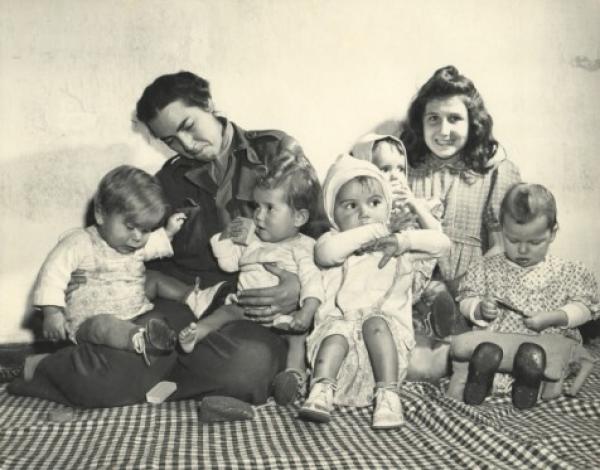


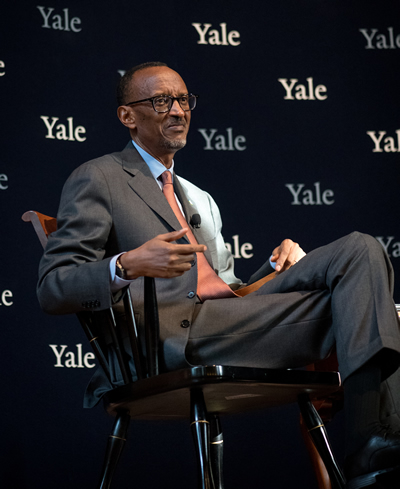
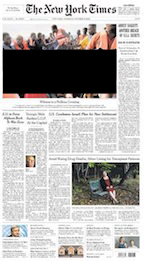

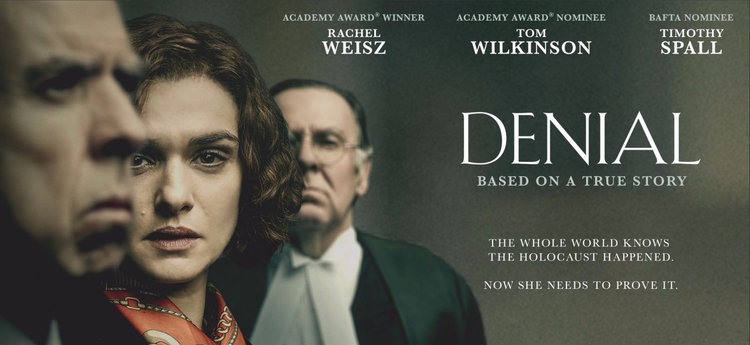 How to handle someone who bends the truth for their own purposes and how one needs to combat these individuals is what lies at the heart of the film, which is based on Lipstadt’s book, History on Trial: My Day in Court with a Holocaust Denier (2005) about her experience of being sued by the British author, David Irving for libel under English law. Irving sued in reaction to what Lipstadt wrote about him her 1993 work, Denying the Holocaust, where she referred to him as a dangerous denier of the Holocaust based on his popularity with the public and several prominent historians through his books about the Third Reich and World War II.
How to handle someone who bends the truth for their own purposes and how one needs to combat these individuals is what lies at the heart of the film, which is based on Lipstadt’s book, History on Trial: My Day in Court with a Holocaust Denier (2005) about her experience of being sued by the British author, David Irving for libel under English law. Irving sued in reaction to what Lipstadt wrote about him her 1993 work, Denying the Holocaust, where she referred to him as a dangerous denier of the Holocaust based on his popularity with the public and several prominent historians through his books about the Third Reich and World War II.
